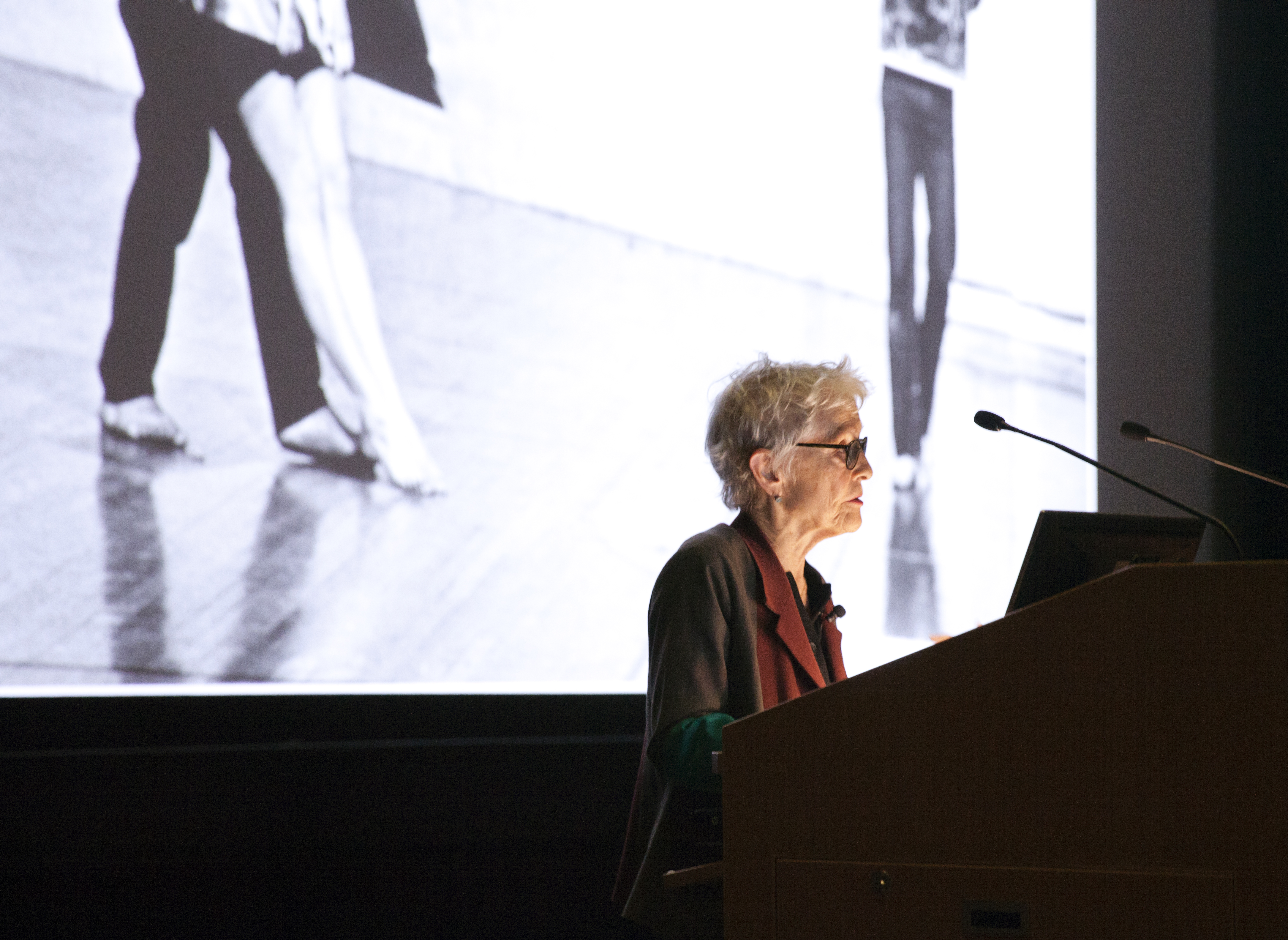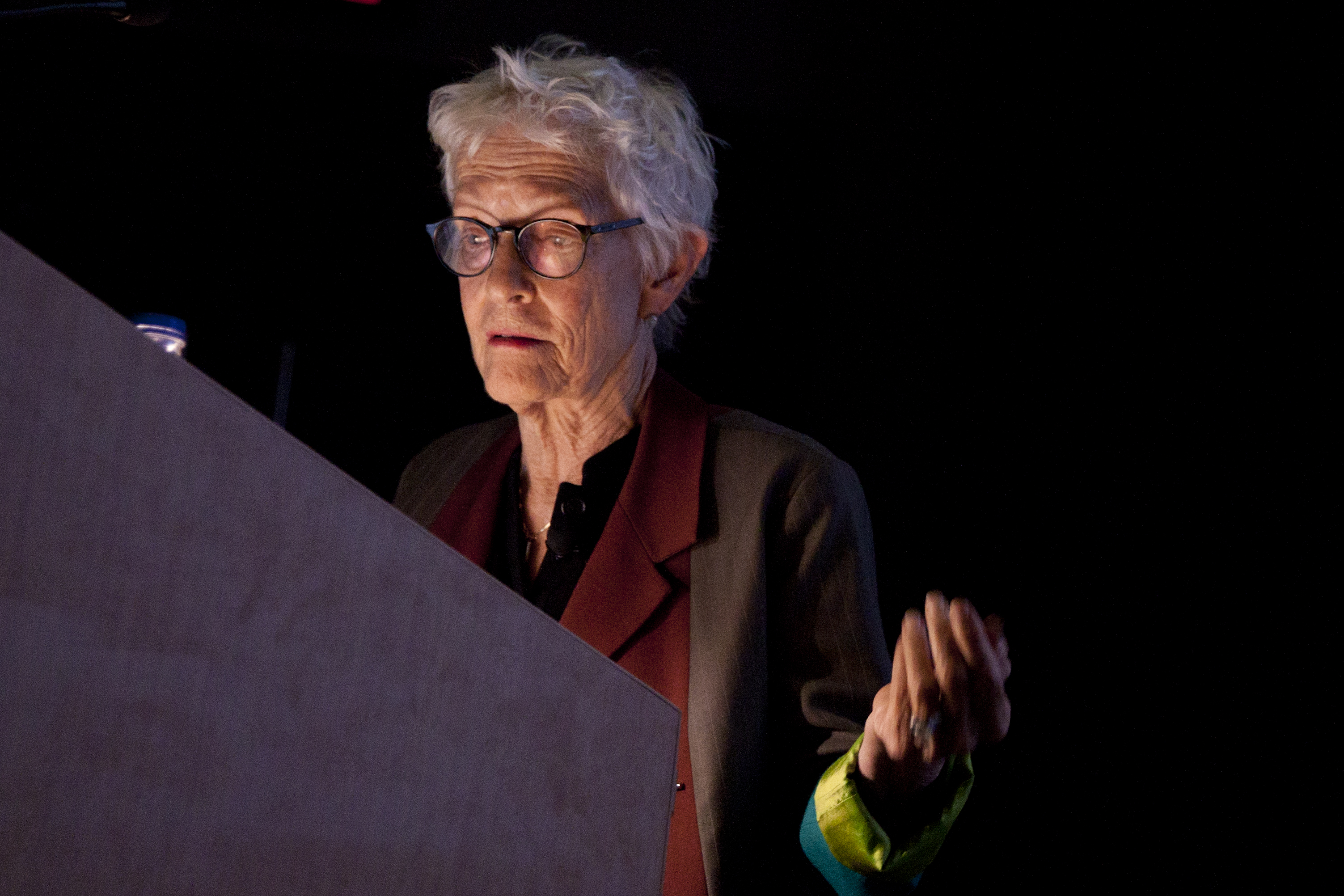Joan Jonas was a keynote speaker at Re-Create, presented on Nov. 5, co-hosted by Concordia
Research itself is the discovery and presentation of ideas, concepts and theories and it can be said that art shares these functions. What happens when research is accompanied by and connected with artistic/creative practices?

This concept was discussed at a conference held at Concordia this week. Media Art Histories—an Austrian organization providing a platform for conferences and more about media art—is celebrating its 10th anniversary and from Nov. 4 to Nov. 8 Concordia University, along with UQÀM, hosted their sixth international Media Art Histories conference. The Montreal edition went by the name of Re-Create 2015: Theories, Methods and Practices of Research-Creation in the Histories of Media Art, Science and Technology.
“Research-creation,” in a vague sense, is the convergence of artistic and creative practices with research—something that can be said to be an increasingly hot topic in the academic world. According to the press release for Re-Create, it “combines theory and practice by connecting interpretative disciplines (humanities) with creative practices (arts and design).” This concept was explored in the conference through the use of dialogue, discourse, artwork, presentation and more. Eighty-one researchers from 21 different countries were represented. The conference was made up of three keynote presentations, the Emerging Researchers’ Symposium (presentations, plenaries and more), the “Bridge” session (a discussion), five public presentations and several exhibitions and satellite activities.
According to the information found on Re-Create’s press release, their use of keynote speakers was to “broaden [the] understanding of the different contexts and aspects of research-creation,” from each speaker’s unique backgrounds and presentations. The first of these speakers to present was Joan Jonas on Nov. 5 in Concordia’s Hall building.

One of Jonas’s biggest, most recent projects was an exhibit named They Come to Us without a Word at the United States Pavilion at the Venice Biennale this year—the third project that has been presented at this venue by the MIT List Visual Arts Center. According to her biography on the project’s website, Jonas “is a pioneer of video and performance art, and an acclaimed multimedia artist.” The web page describes Jonas to have been a central figure in ‘60s and ‘70s in the performance art movement, with work that remains relevant for the development of some contemporary art genres. Jonas has been a professor at MIT since 1998 and currently teaches in the Art, Culture, and Technology program within the School of Architecture and Planning.
In her keynote lecture Jonas presented a wide array of the work she produced and performed over the years, highlighting the threads, inspirations and concepts that run through them. The audience was presented with details of what sparked certain projects of hers, her views on props that she recurrently used, what things or experiences draw her personally and more.
Jonas noted some of her inspirations, such as Hilda Doolittle, as well as things that largely influence her work, like travel. For example, she mentioned Japan to be a place that both influenced some of her notable work in the ‘70s as well as the physical structuring of one of her gallery setups later on in her career. She brought up her recurringly presented idea of “inside and outside,” the relation between personal ideas coming from her interacting with what was going on in the world around her, as well as her consistent draw to fairy tales, ghost stories, ritual, mirrors, animals and more.
“It was … not only her engagement with new media at the time or interests in the new media of video, but also her knowledge and passion for research, specifically for art history, poetry, literature, history, and cinema … which allowed [Jonas] to weave together various stories and inspirations,” said Barbara Clausen, the UQÀM respondent, or host, for the lecture.
“When I began my work I studied art history and sculpture, and research, of course, has always … been part of the development and process of anybody studying or making anything. Research … it goes without saying, [is] part of the process,” said Jonas.
And as much as research-creation can entail the utilization of creative or artistic practices for academic research, it can also be linked with the way research serves the creation of artwork as well. “I’m researching all the time … I call it reading, going to the library—I don’t really like to call it research. But it is just an integral part of my work as it is of many people’s work,” said Jonas.
The lecture presented the audience with an overview of Jonas’s work and the ideas and themes it has presented over the years. This allowed for the exploration of a notable artist and media art as a whole, but also inspired thought on the role that research plays in its relationship with artwork. Perhaps now more than ever, the academic world is ready for a more rampant integration of artistic creativity and scholarly research.
To learn more about Media Art Histories visit their website at mediaarthistory.org.



